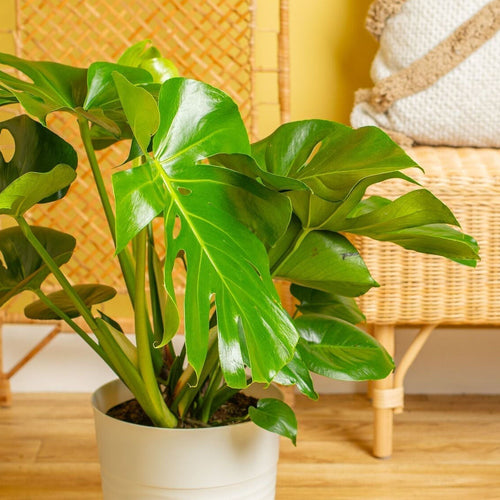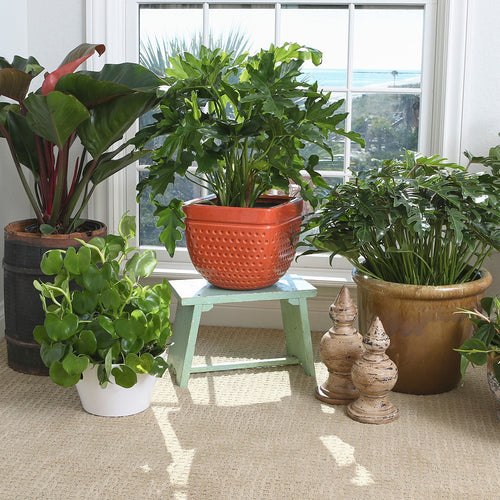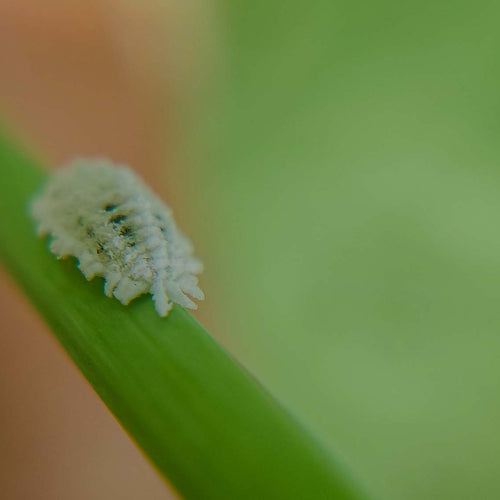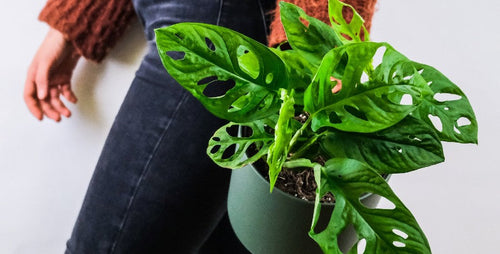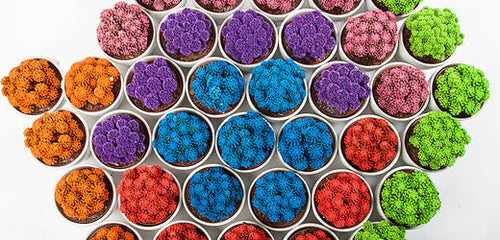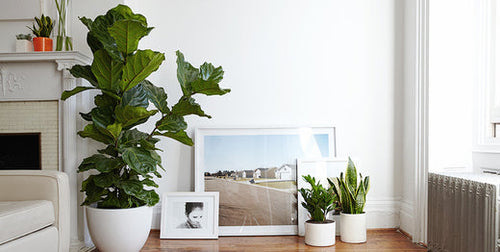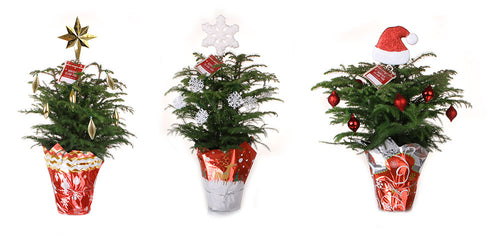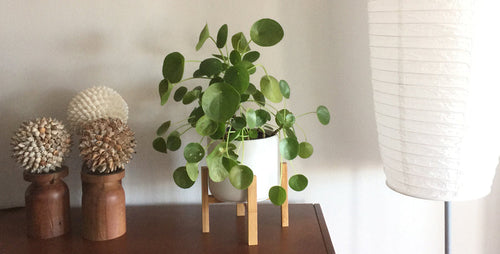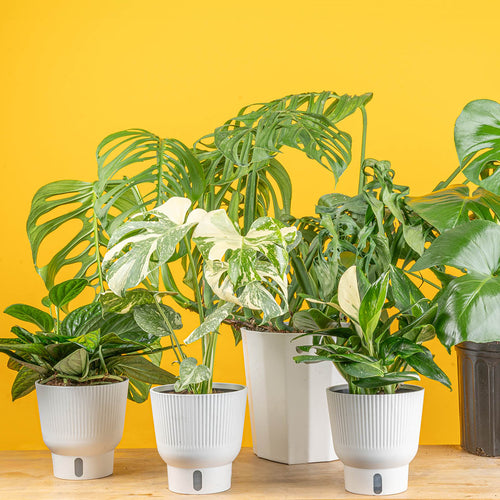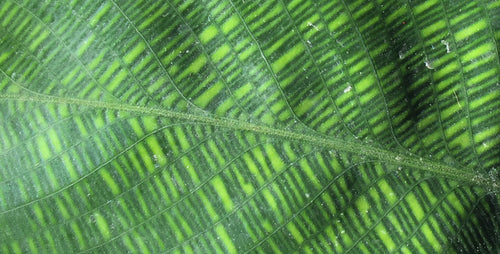I love houseplants and try to always have a few in every room in my home. But, I also understand that a lot of sun-loving varieties won’t do well in my home because our house faces north, with big porch overhangs on two sides that block any sunlight from entering our living and dining rooms.
So, we have to rely on houseplants that can take low-light conditions. Keep in mind that “low light” doesn’t mean “no light.” All plants require light to survive, even if it’s just from a fluorescent bulb in a dim office or back bedroom. No plant will survive living in a completely dark spot.
Here are five favorites that thrive without direct sunlight.

Sansevieria (left and above)
Also called snake plant or the politically incorrect, mother-in-law’s tongue, sansevieria is one of the toughest houseplants on the planet. These architectural beauties come in a variety of leaf shapes and colors and do just fine in low-light locations. They are drought tolerant, too so you don’t have to feel guilty about not watering them if you take off for a 10-day vacation. Water only when the soil feels completely dry to the touch. Overwatering can kill them if they are living in a low light situation. What’s nice about sansevieria is that it can also do well in bright conditions if you move or decide to redecorate your home.
Pothos (above)
Often confused with philodendron (see this story about the differences), pothos is a vigorous vine that sports shiny colorful foliage in green, chartreuse, and variegated forms. They do great in hanging baskets or trained up a moss covered totem. Over time, they do have a tendency to get a bit leggy, but all you need to do is prune them back a little to encourage bushier growth. Plus, you can root the cuttings in water to make more plants. Water pothos whenever the soil surface feels dry to the touch. See which pothos variety best suits your personality.
Philodendron
A classic houseplant that can take tons of abuse, philodendrons offer plenty of variety. The most commonly grown philodendron is a handsome vining plant with dark green or variegated leaves. These are great plants and look terrific in urns, baskets, or trained on low trellises. But, there are also relatives that offer big, broad leaves such as Prince of Orange, Moonlight, Mini Split-leaf, Selloum, and Xanadu. Use them to make a bold statement in your living room or bedroom. Even though philodendrons come in different packages, they all thrive in low light with a quick drink whenever the soil surface feels dry to the touch.
Aglaonema
I don’t know about you, but I just call Aglaonema by its common name, Chinese evergreen (I struggle to spell aglaonema as well as pronounce it!). These are great plants that offer gorgeous sword like green or green and silver foliage. They take low light in stride although they do like to be watered before their soil dries out completely. Red aglaonemas are also great for low-light situations. Relatively new on the market, colorful aglaonemas actually come in a number of colors besides red (yes, it’s a bit confusing). Some of my favorites include Two Tone Moonstone, White Calcite, Siam Aurora, and Pink Dalmation.
ZZ plant
Have you grown a ZZ plant yet? If not, get to a garden center as soon as you can and fill your cart with these handsome plants. ZZ gets its name from its scientific name, Zamioculcas zamifolia. (I dare you to say that five times fast.) It’s a handsome plant with bright, shiny green leaflets that sprout on the upper sides of the fleshy stems. ZZ likes to be watered whenever the soil feels dry to the touch, but it won’t complain if you forget to water it now and again. The plant actually stores moisture in its fleshy stems so it doesn’t have to worry about unexpected dry spells.
Written by Doug Jimerson







